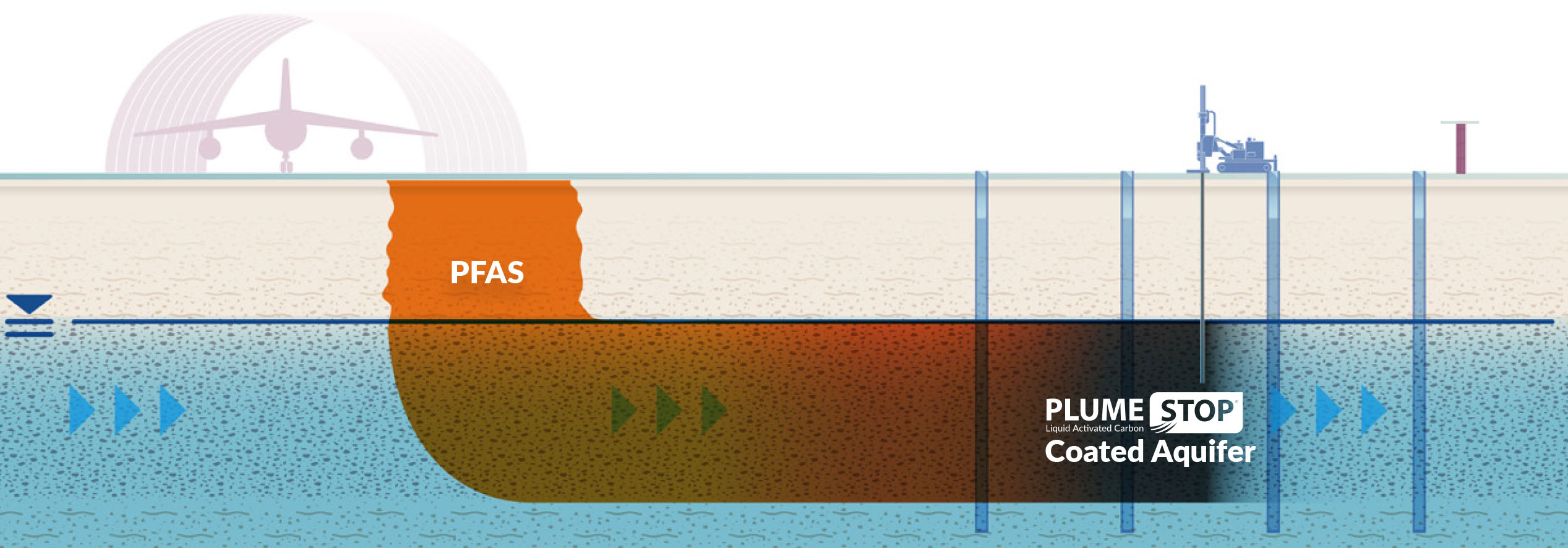Your Overview to PFAS Therapy Technologies and Benefits
The frequency of PFAS contamination in water sources demands a complete understanding of available treatment innovations. Each technology not just targets specific PFAS substances yet also plays a critical role in enhancing total water top quality and protecting environmental stability.
Recognizing PFAS Contamination
Recognizing PFAS contamination is critical for addressing its pervasive influence on environmental and human health and wellness (m270 pfas treatment). Per- and polyfluoroalkyl compounds (PFAS) are a team of artificial chemicals commonly utilized in different commercial and customer products because of their water- and grease-resistant homes. Frequently found in firefighting foams, non-stick pots and pans, and water-repellent materials, PFAS have gone into the atmosphere via manufacturing procedures, wastewater discharges, and leaching from garbage dumps
Once released, these substances linger in the setting, leading to prevalent contamination of dirt and water resources. Their special chemical framework, defined by strong carbon-fluorine bonds, renders them immune to destruction, causing a sensation referred to as "forever chemicals." As a result, PFAS can gather in the body and the food cycle, potentially causing damaging wellness results, consisting of immune system disruption, developing problems, and an increased threat of specific cancers cells.
Governing firms and health companies are progressively acknowledging the significance of PFAS contamination, triggering efforts to check, evaluate, and minimize its impacts. Recognizing the pathways of PFAS contamination is important for educating public policy and creating efficient methods to protect both ecological and human wellness.
Overview of Treatment Technologies
Numerous treatment technologies have been created to address the difficulties posed by PFAS contamination in water and dirt. These technologies can be generally classified into numerous categories, each with its one-of-a-kind mechanisms and efficiency in getting rid of PFAS compounds.
One popular strategy is ion exchange, which utilizes resin products to record and get rid of PFAS from polluted water. This technique is particularly effective for short-chain PFAS and can accomplish significant decreases in focus levels. One more technology, advanced oxidation procedures (AOPs), uses strong oxidants and ultraviolet light to damage down PFAS into less unsafe substances. AOPs are appropriate for treating a broad variety of PFAS compounds but might call for careful optimization to optimize efficiency.

Activated Carbon Filtering
Turned on carbon purification is an extensively made use of approach for the removal of PFAS from contaminated water, recognized for its ability to adsorb a broad variety of organic substances. This modern technology employs activated carbon, an extremely porous material with an extensive surface location, which promotes the binding of PFAS particles through physical adsorption. The effectiveness of turned on carbon in eliminating PFAS is influenced by a number of variables, consisting of the kind of carbon utilized, the get in touch with time, and the focus of PFAS in the water.
One of the benefits of turned on carbon purification is its convenience; it can be applied in different setups, such as granular activated carbon (GAC) systems or powdered triggered carbon (SPECIAL-INTEREST GROUP) systems. GAC systems are typically used in larger-scale applications, while political action committee can be used in smaller sized or short-lived configurations. The modern technology is fairly easy to run and preserve, making it available for many water treatment centers.

Ion Exchange Equipment
Ion exchange systems represent another reliable method for the elimination of PFAS from polluted water, complementing techniques like activated carbon filtering. These systems operate on the concept of exchanging ions in the water with ions hung on a resin product. Ion exchange materials can be particularly formulated to target the adversely billed PFAS compounds, properly recording them and enabling cleaner water to pass through.
Among the key advantages of ion exchange systems is their capacity to eliminate a wide variety of PFAS, consisting of both long-chain and short-chain variations. This versatility makes them appropriate for numerous applications, ranging from local water treatment to commercial processes. In addition, ion exchange systems can commonly achieve lower discovery limits for PFAS compared to a few other treatment techniques, hence enhancing water high quality.
Nonetheless, it is have a peek at these guys important to check and take care of the regeneration of ion exchange media, as the performance can decrease with time due to saturation. Appropriate upkeep and substitute of the resin are important for maintaining the system's performance. On the whole, ion exchange systems provide a trustworthy and efficient service for PFAS removal, adding significantly to safe drinking water requirements and environmental management.
Advanced Oxidation Processes
Advanced Oxidation Processes (AOPs) make use of powerful oxidants to successfully break down PFAS substances in infected water. These innovative treatment methods generate highly reactive varieties, such as hydroxyl radicals, try here that can break down complex PFAS molecules into less damaging byproducts. m270 pfas treatment. AOPs generally employ mixes of ultraviolet (UV) light, ozone, hydrogen peroxide, or Fenton's reagent, boosting the oxidation potential and improving deterioration effectiveness
The main benefit of AOPs depends on their ability to target a wide range of PFAS substances, consisting of both long-chain and short-chain versions. This convenience is important, as PFAS contamination frequently entails mixtures of various substances with varying chemical structures. Furthermore, AOPs can be incorporated into existing water treatment systems, making them a useful solution for several communities and markets.
Nonetheless, the application of AOPs a fantastic read can be resource-intensive, requiring mindful factor to consider of functional costs and power usage. In addition, while AOPs work in breaking down PFAS, they might not totally get rid of all byproducts, requiring further therapy steps - m270 pfas treatment. Overall, AOPs stand for a promising opportunity for attending to PFAS contamination, adding to cleaner water resources and boosted public health and wellness defense

Verdict
By selecting the proper innovation, communities can boost water high quality, shield public health and wellness, and minimize the environmental threats associated with PFAS exposure. Proceeded research and implementation of these approaches are vital for reliable administration of PFAS contamination in influenced areas.
Comments on “The Role of PFAS Treatment in Cleaning Contaminated Water”